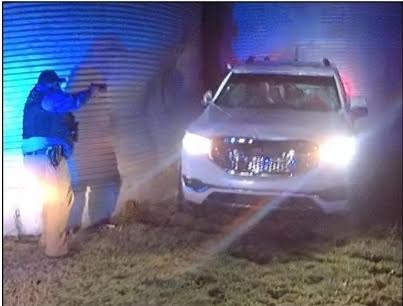Unsolved murders increase
Published 12:00 am Wednesday, February 23, 2000
After Michael Wayne Penley killed a Bowling Green bar patron with a single gunshot in 1998, he sat at a nearby table, lit a cigarette and drank a beer. As the bars customers poured out of the building, city police arrived to find eyewitnesses and, literally, a smoking gun leading to their man. But the infamous smoking gun is becoming a rarity at murder scenes, law enforcement authorities said. In fact, as the number of reported murders in the nation has decreased during the past 30 years, the rate of unsolved murders has risen. Nationwide, police solved 86 percent of all murders in 1968; by 1994, police solved just 64 percent of murders, a USA Today study has found. Most homicides, especially what we have in Kentucky, are not real sophisticated and most of them are pretty easily solved, said Terry Cox, a professor of violent crime for Eastern Kentucky Universitys Department of Criminal Justice and Police Studies in Richmond. The two or three in 10 murders that remain unsolved do so because of an increase in the number of homicides committed by people who did not know their victims, Cox said, adding that wiser criminals also are occasionally to blame. But murders in both categories are relatively uncommon in Kentucky when compared to other states, he said. Organized crime in gang or drug activity may pull off a more sophisticated murder than that commonly seen in a love triangle-type murder, state Medical Examiner Dr. Donna M. Hunsaker said. Hunsaker has seen cases in Kentucky in which the murderer tampered with the crime scene or with the body. In one such case, the victim was shot in the head and put in the trunk of a car, which then was set on fire. But the answers often can be found despite a criminals attempt to hide or destroy evidence, she said. Most people are not familiar with what we look for in cases of homicide, Hunsaker said. The cause speaks for itself. We try to find out more about the scenario. Bowling Green police recorded five murders in 1997, two in 1998 and three in 1999, according to Barry Pruitt, city police crime analyst. One murder has remained unsolved each of those years: Tony Lemons in 1997, Carol Neal in 1998 and Kevin Ragland in 1999.Murder is a fairly intimate crime, said Gary Potter, also a violent crime professor at Eastern. Youre far more likely to be killed by people who know and love you than people who dont. Most studies show that three of four murders are committed by the victims relatives or friends, most often following an argument, Potter said. Most murders are spontaneous, frequently evolving from an assault, and are carried out while the murderer is either under the influence of drugs or alcohol or in a state of passion, such as fear, anger or jealousy, Potter said. In almost every murder, a trail of evidence is left that could lead police to the killer, Cox said. DNA and other scientific tests have played a positive role, both in eliminating suspects and in connecting serial crimes, he said. But without a suspect that matches the DNA sample left at the scene as often is the case when the murderer is a stranger to the victim that evidence may be a dead end, Cox said. Warren Countys mysterious casesUnsolved murders in Warren County and Bowling Green since March 1997:Warren CountyEdward Delane Upton, 38, was found shot to death in the front yard of his Harry T. Honaker Road home Thursday morning. Upton was facing charges in connection with the November burning of a barn suspected of housing a methamphetamine lab. Kentucky State Police are handling the investigation. Walter Fowler, 44, of Smiths Grove was reported missing June 20 by his wife, Debra Kay Fowler, who told Warren County Sheriffs Department that he failed to return home after a fishing trip. Despite an exhaustive search for Fowler and a reward for information, his body has not been found and investigators have upgraded the case to a homicide investigation. Bowling GreenAbner Lightfoot, 33, was found dead Monday in his Wilson Street apartment. City police at the scene were examining a door that appeared to have been kicked in. An autopsy was scheduled for today at the state Medical Examiners Office in Louisville. Kevin L. Ragland was fatally shot in October as he stood outside his home in the 1300 block of Chestnut Street. His girlfriend told police that Ragland, whom she found bleeding in front of his home, told her before dying that healso had been robbed. She told police that Raglands necklace was missing. Carol Neal last was seen in November 1998. Police found evidence of foul play at her Shawnee Estates home and believe she is dead, but they have not found her body. Tony Lemons was shot to death in March 1997 at his Beauty Avenue home.






